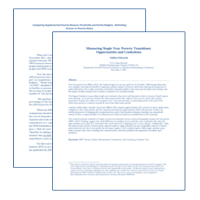
An official website of the United States government
Here’s how you know
Official websites use .gov
A .gov website belongs to an official government organization in the United States.
Secure .gov websites use HTTPS
A lock (
) or https:// means you’ve safely connected to the .gov website. Share sensitive information only on official, secure websites.
-
//
- Census.gov /
- Library /
- Census Working Papers /
- Income Inequality among Regions and MSAs
Income Inequality among Regions and Metropolitan Statistical Areas: 2005 to 2015
Income Inequality among Regions and Metropolitan Statistical Areas: 2005 to 2015
Two main areas have received little attention in the income inequality literature recently. The first concerns where in the income distribution income inequality takes place. The second concerns how income inequality and changes in income inequality differ throughout the country. I address these concerns and differ from previous research in four main ways. First, I use an internal Census Bureau dataset, American Community Survey 1-year, which has rarely been used to study income inequality. Second, I examine income inequality, the effect of government programs, and how these have changed over time among regions and among small, medium, and large MSAs. Large MSAs, MSAs with populations over 1 million people, have been studied before while medium MSAs, MSAs with populations between 250,000 and 1 million people, and small MSAs, MSAs with populations less than 250,000 people have not been studied. Third, I use a unique set of income inequality measures that have rarely been used together in the same paper: the 90-10 ratio, the 99-90 ratio, the 90-50 ratio, and the 50-10 ratio. These measures are important because they allow me to examine income inequality at different points in the income distribution. Finally, I regress these income inequality ratios on a set of MSA variables in order to investigate what characteristics of MSAs are associated with higher or lower income inequality in different parts of the income distribution.
Share
Related Information
WORKING PAPER
Poverty Working PapersSome content on this site is available in several different electronic formats. Some of the files may require a plug-in or additional software to view.
 Yes
Yes
 No
NoComments or suggestions?


Top


